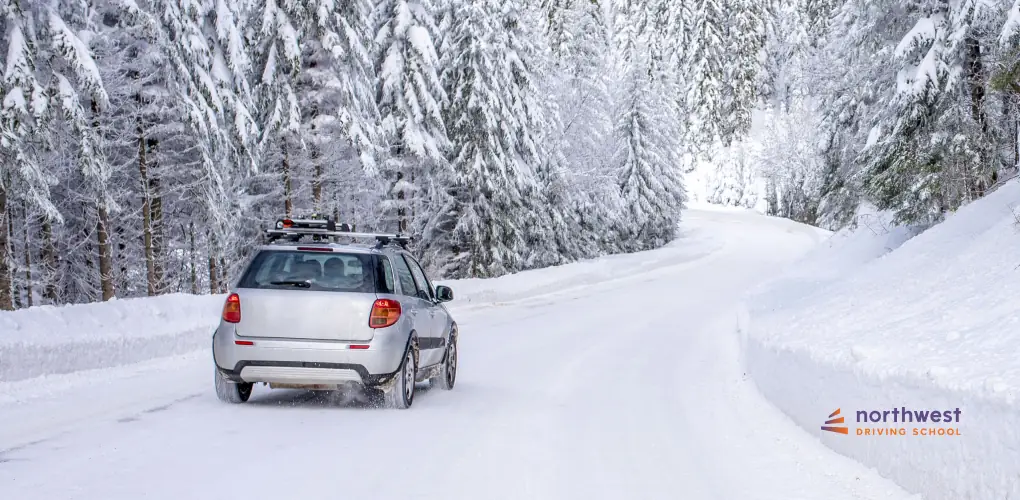- Others
Essential Winter Driving Tips in Nevada for New Drivers

The roads in Nevada during winter may come as a surprise to some new drivers. While the state is widely known for its desert landscape and dry heat, the northern parts and higher elevations in Nevada often get snow, ice, and even strong winds. Additionally, even in areas with less snow, cold mornings can bring frost that alters road conditions.
If you are a beginner driver, it is essential to understand how to navigate specific road conditions. Learning some precautions from professional driving instructors in Las Vegas will not only keep you protected but also make every driving on the road safe.
Table of Contents
Prepare Your Car Before You Drive
Driving in winter demands more preparation. You need to make sure your vehicles are ready for colder conditions. Check your car battery, as cold weather can often weaken it. You should also check your tires to ensure they have sufficient tread.
If you ever live in northern Nevada, you may need winter tires. Keep your gas tank at least half full to prevent the fuel line from freezing. Also, don’t forget your windshield wiper fluid, as dirt and ice can block your view quickly. These simple winter driving tips can help you avoid trouble later.
Clear Snow and Ice Before Starting
If you live in a snowy area, always remember to never drive with snow piled on your windows or car roof. Take some time to scrape the ice and brush off the snow. Even a thin layer can block your view and may cause unwanted accidents on the road.
Snow on the roof can slide down and may cover your windshield when you take a brake. Make sure to allocate some time to clear everything first, take a few minutes, as it will keep you safe.
Slow Down on Snow and Ice
Now, what if the roads are icy? Speed will become your most significant risk here. Often, cars slide more easily when their tires cannot grip the surface. In this situation, give yourself more time to reach your destination.
Drive more slowly and avoid sudden, reckless moves. If you brake hard or turn too quickly, your vehicle may spin out of control. So please slow down, it’s the simplest but most effective precaution you can take while driving on an icy road.
Keep a Longer Distance
In winter, stopping takes more space. If you usually keep two car lengths between you and the car in front, increase it to four or more car lengths. This way, if the other driver stops suddenly, you have enough room to slow down safely. Think of it as giving yourself a safety cushion. The extra space could prevent a crash.
Use Your Lights Wisely
Nevada winter often brings cloudy skies and shorter days. Turn on your headlights even during the day if visibility is low. It helps other drivers see you sooner. Avoid using high beams in heavy snow or fog, as the light reflects, making it harder to see. Correct use of lights is a small habit that makes a big difference.
Know How to Handle Skids
Even careful drivers can face a skid. If your car begins to slide, do not panic. Take your foot off the gas and steer in the direction you want the car to go. Do not slam on the brakes, as this will worsen the skid; instead, practice calm control. Skids can be scary, but the proper response keeps you steady.
Watch for Black Ice
Black ice is a thin, transparent layer that blends with the road. It often appears on bridges, overpasses, and shaded areas. You may not see it until your car begins to slide. Drive carefully in places where black ice is common. If the road looks shiny but dry, treat it as if it were slippery.
Pack a Winter Safety Kit
It is smart to keep emergency supplies in your car. A blanket, flashlight, water, and snacks can be helpful if you get stuck. Keep a small shovel and some sand or kitty litter on hand in case your tires need extra traction. A phone charger is also essential. Winter can be unpredictable, so having these items gives you extra support.
Plan Your Trips
Check the weather forecast before you leave. If conditions appear severe, consider delaying your trip if possible. Let someone know where you are going and what time you expect to arrive. Simple planning reduces risk and gives peace of mind. In winter, even short trips can take longer than expected.
Stay Calm and Focused
Winter roads demand more attention. Put away distractions like phones. Keep both hands on the wheel. Stay calm if other drivers move faster or slower than you. Focus only on your own safety. Driving in winter is about patience, not rushing.
Conclusion
Winter driving in Nevada is not just about snow; it’s about navigating the state’s unique terrain. It is about handling changing conditions with skill and care. From preparing your car to adjusting your speed and staying alert, each step adds to your safety. With practice, these habits will become natural. Safe winter driving protects not just you but also everyone sharing the road.
Enroll now at Northwest Driving School today and learn the skills that will keep you safe in every season, including winter.


